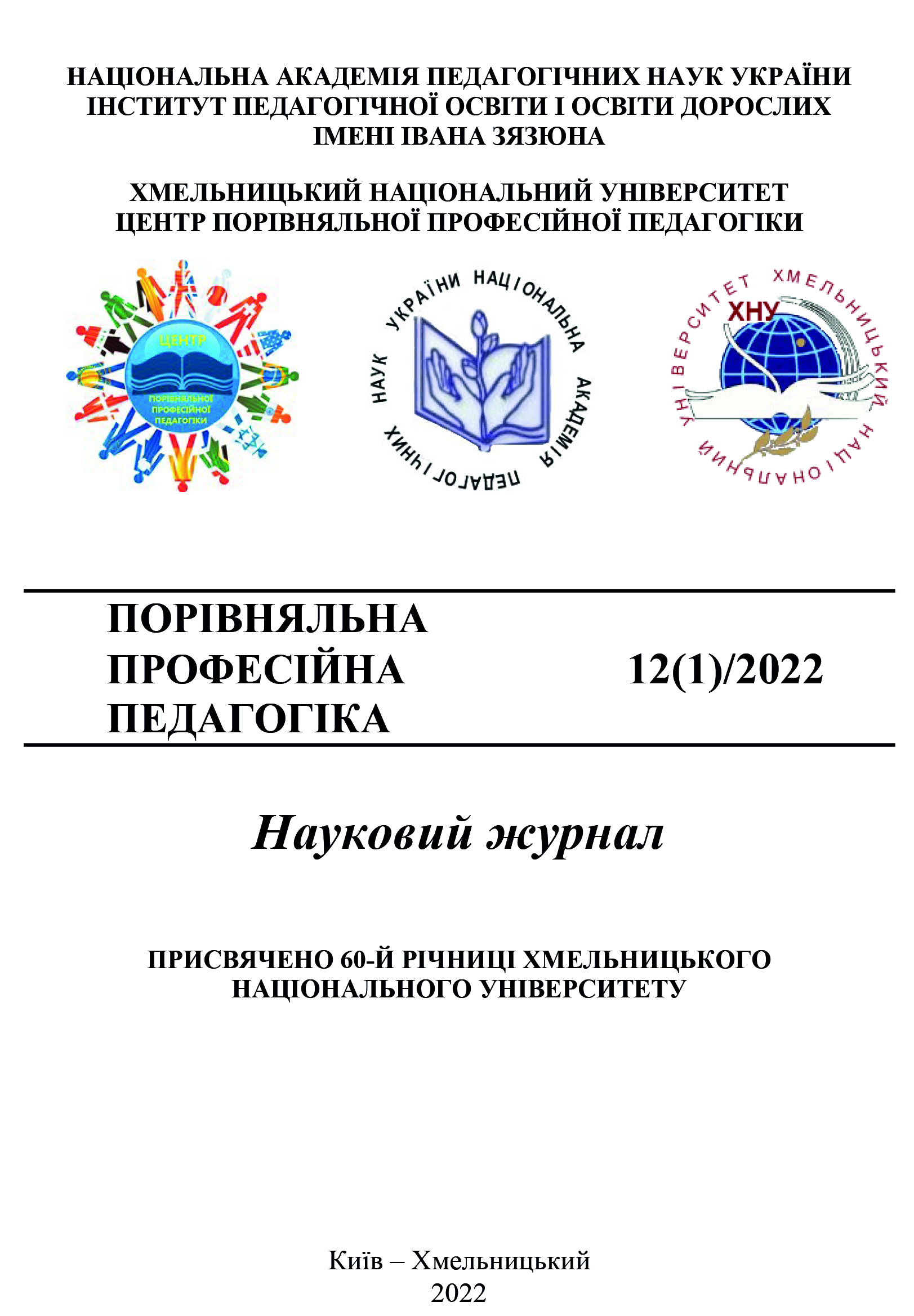IMPLEMENTATION OF IMMERSIVE TECHNOLOGIES IN FOREIGN LANGUAGE LEARNING: ANALYSIS OF FOREIGN AND DOMESTIC (UKRAINIAN) EXPERIENCE
DOI:
https://doi.org/10.31891/2308-4081/2022-12(1)-8Keywords:
virtual reality, immersion, immersive technologies, foreign language training, educational technologyAbstract
The use of modern immersive technologies in the educational process is due to changes in the development of information and communication technologies and the challenges of the pandemic, which forced learning and working remotely. The article summarizes the Ukrainian and foreign experience of using immersive technologies in education in general and in the process of learning foreign languages in particular. A general description of the concepts “virtual reality”, “immersion” and “immersive technologies” in the context of their use in the educational process has been presented. The advantages of using immersive technologies over traditional ones have been defined and proved. They are visibility, concentration, involvement and effectiveness It has been determined the expediency of using immersive technologies in the process of learning foreign languages as a method and technology of long-term immersion of students in a foreign language space based on a foreign language or bilingual education, which involves the use of video, audio, and text information by students to form relevant professional competencies.
The research of scientists and their main results related to the selection and application of immersive technologies in teaching foreign languages have been analyzed. Virtual applications that can be used for learning a foreign language have been analyzed. The conclusion has been formulated that immersive technologies provide the formation and development of a new information method of presenting and learning educational material, which positively affects the formation of basic and professional competencies of students studying a foreign language. The opinion about the possibility of combining immersive learning methods with other interactive methods has been substantiated.
References
Augmented and virtual reality survey report. Industry insights into the future of immersive technology (2020). Retrieved from https://www.perkinscoie.com/images/ content/2/3/231654/2020-AR-VR-Survey-v3.pdf.
Biocca, F. & Delaney, B. (1995). Immersive virtual reality technology. Communication in the age of virtual reality, Lawrence Erlbaum Associates, Inc, Hillsdale, NJ, US, 57–124.
Chen, Y., Smith, T.J., York, C.S., Mayall, H.J. (2019). Google Earth Virtual Reality and expository writing for young English learners from a Funds of Knowledge perspective. Computer Assisted Language Learning, 33:1–2, 1–25.
Dashko, L., Dubytska, O. (2019). Virtualna realnist yak instrumentarii ediuteinmentu v movnii osviti [Virtual reality as instrument of edutainment in language education]. Molodyi vchenyi, 4.2(68.2), 52–58. (in Ukrainian)
Freina, L., Ott, M. (2015). A literature review on immersive virtual reality in education: state of the art and perspectives. The international scientific conference eLearning and software for education, Vol. 1, National Defense University, 133.
Hein, R., Wienrich, C., Latoschik, M. E. (2021). A systematic review of foreign language learning with immersive technologies (2001-2020). AIMS Electronics and Electrical Engineering, 5(2), 117–145.
Hytner, J. (2017). Paul Driver on virtual reality and transmedia spherical video in teacher training. Retrieved from https://www.cambridge.org/elt/blog/2017/11/01/virtual-reality-spherical-video-teachertraining.
Jensen, L. & Konradsen, F. (2018). A review of the use of virtual reality head-mounted displays in education and training. Education and Information Technologies, 23 (4), 1515–1529.
Klymnyuk, V. (2018) Virtualna realnist v osvitnomu protsesi [Virtual reality in educational process]. Zbirnyk naukovykh prats Kharkivskoho natsionalnoho universytetu Povitryanykh Syl [Journal of Kharkiv National University of Air Forces], № 2 (56), 207–212. (in Ukrainian)
Lan, Y.J. (2020). Immersion, interaction, and experience-oriented learning: Bringing virtual reality into FL learning. Language Learning and Technology, 24(1), 1–15.
Lee, K. (2012). Augmented Reality in Education and Training. TechTrends, 56, 13–21.
Lin, T. J., Lan, Y. J. (2015). Language learning in Virtual Reality environments: Past, present, and future. Educational Technology & Society, 18(4), 486–497. Retrieved from https://www.researchgate.net/publication/281027027_Language_Learning_/ in_Virtual_Reality_Environments_Past_Present_and_Future.
Makransky, G. S., Borre-Gude, R., Mayer, E. (2019). Motivational and cognitive benefits of training in immersive virtual reality based on multiple assessments. Journal of Computer Assisted Learning, 35 (6), 691–707.
Merchant, Z., Goetz, E. T., Cifuentes, L., Keeney-Kennicutt, W., Davis, T.J. (2014). Effectiveness of virtual reality-based instruction on students’ learning outcomes in k-12 and higher education: A meta-analysis. Computers & Education, 70, 29–40.
Parsons, D., Inkila, M., Lynch, J. (2019). Navigating learning worlds: Using digital tools to learn in physical and virtual spaces. Australasian Journal of Educational Technology, 35(4), 144–159.
Rogers, S. (2019). Virtual reality: The learning aid of the 21st century. Retrieved from https://www.forbes.com/sites/solrogers/2019/03/15/virtual-reality-the-learning-aid-of-the-21st-century/?sh=4e075cc7139b.
Slater, M., Wilbur, S. A. (1997). Framework for immersive virtual environments (FIVE): Speculations on the role of presence in virtual environments. Presence: Teleoperators & Virtual Environments, 6 (6), 603–616.
Volynets, V. (2021). Vykorystannya tekhnolohiy virtualnoi realnosti v osviti [The use of VR technologies in education]. Neperervna profesiina osvita: teoriya i praktyka, (2), 40–47.


